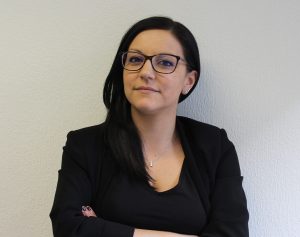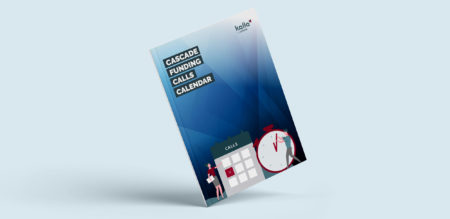
Opinion
Research
Balancing the high-risk/high-gain approach in ERC grants

Germán Zango
Líder del área de Ciencia y Educación en Proyectos Europeos
SMEs
Everything you need to know about EU funding programmes


Consultant and EIC Accelerator expert
Three years ago, the European Commission published its strategy for Europe’s SMEs, a detailed action plan to help these companies adapt and thrive in an increasingly digital and sustainable world. One of its pillars is improving access to finance, an essential aspect in which Zabala Innovation has extensive and recognised experience.
When it comes to accessing European funding, innovative SMEs will not have to meet any essential requirements. This means that it is not necessary to have previous experience in national grants, to have a network of European partners, to be able to lead a consortium of several partners with a large budget, or to have a product close to the market or an idea that is not very mature but technologically disruptive. These aspects, however, may be relevant when choosing the most suitable option for each SME. These are the most popular opportunities and the elements to consider taking advantage of them.
The European Commission uses cascade funding – also known as financial support for third parties – to distribute public funds in lesser amounts, between €50,000 and €200,000, in an agile way. Its main objective is to support the incorporation of novel technologies, and the promotion of startups and pioneering sectors, mostly in the digital area (industry 4.0, data), blockchain, energy saving or health pilots.
As it is a simple procedure that does not require previous experience in European projects, cascade funding is the ideal option if you do not have too many resources. These calls are less well known than regular calls, so the chances of successful proposals increase. However, they tend to focus on specific topics, so it is important to check the conditions in each case in detail.
The European Innovation Council (EIC) was established with the purpose of identifying, developing, and scaling up innovative technologies and companies, which are considered essential for EU policies to achieve the digital and green transition, and to ensure future strategic autonomy in key technologies.
The EIC is divided into three main programmes. The EIC Pathfinder (advanced research to develop the scientific basis underpinning innovative technologies), the EIC Transition (to validate technologies and develop business plans for specific applications), and the EIC Accelerator (to bring technologically disruptive innovations from SMEs, start-ups, and spin-offs to market and scale).
It is important to note that the EIC Pathfinder requires the participation of a consortium of three independent entities from three eligible countries unless the project applies to a specific challenge. In this case, it is possible to apply individually or under a consortium of two entities. Any type of entity can participate, be it a company or a university or research centre. The project will focus on an immature but disruptive technology.
As for the EIC Transition, the eligibility of the project is conditional on it being based on the results of a previously funded European project (FET, Pathfinder and ERC proof-of-concept, or any Horizon Europe project with low levels of technological maturity, among others), which is a significant barrier.
In short, if you are a research centre, or an SME with good relationships with European partners that are developing disruptive innovations in less mature states, the EIC Pathfinder may be a good option. The EIC Transition will be the step to take after having obtained positive results in other European projects.
Are you an SME with a proven, disruptive technology and the capacity to generate a major market impact? Do you have a unique value proposition and a clear competitive advantage? If the answer is yes, the EIC Accelerator may be a good option for you to take the definitive leap to the market.
Its high funding capacity (up to EUR 2.5 million in grants and EUR 15 million in equity per project) makes it one of the most sought-after SME programmes in the European context. This popularity is a double-edged sword, as the success rate is below 5% and the three-stage procedure is complex and highly demanding.
A successful EIC Accelerator project must focus on a clear technological innovation compared to the state of the art. It must be evaluated in a relevant environment, allowing the expected impact and competitive advantage of the proposed solution to be quantified. The team must be at the forefront and all aspects of the business plan must be well thought out.
In addition, a project can only be submitted twice to this programme, so if all the above conditions are not met, it may be best to wait or look for other, more accessible programmes.
Within the Eureka framework, the Eurostars programme supports innovative SMEs and their partners (large companies, universities, research, and other organisations) by funding international collaborative R&D&I projects that result in the creation of new products, processes and services that can be rapidly commercialised in European and global markets. The project can belong to any civil sector.
The consortium must be led by an innovative SME and include at least two independent entities from two Eurostars member countries. The average budget per project is €1.5 million. The intensity of the grant depends on the country of each entity.
Beyond the fact that it has a higher project approval rate than other programmes such as EIC Accelerator, compared to Horizon Europe, for example, Eurostars also has the advantage that the consortia formed are more manageable, as there are usually between two and four partners.
Because of its size, its success rate (around 30%), and its flexibility, Eurostars is a great option for an SME mature enough to lead an intermediate project.
Eureka also supports SMEs with more mature solutions seeking commercial relationships and private investment through the Investment readiness programme. It does this through two tools:
The main advantage of the Eurostars programme is the fact that the SME coordinates the project, i.e., it has the capacity to drive the main idea and transform it into a competitive project with the help of European partners. For the SME to participate as a partner in a larger European project, however, the right circumstances must be in place. This video explains in detail the steps to follow to be part of a consortium.

Bilbao Office
Consultant and EIC Accelerator expert

Opinion
Research

Germán Zango
Líder del área de Ciencia y Educación en Proyectos Europeos

Opinion
Clean energy

Thomas Zimmer
Consultant and LIFE CET expert – EU projects

Opinion
Energy

Edoardo Genova
Dissemination and Communication in European Projects

News
HERA INCUBATOR
According to the new biodefence plan, HERA Incubator, projects with clinical trials will receive funds to fight new COVID-19 variants. Find out about Zabala’s experience in project management related to health.

Opinion
Defence

Margherita Volpe
Security, Space & Defence Knowledge Area Leader

Publication
CASCADE FUNDING
We have gathered all the Cascade Funding calls for proposals in a calendar, available for download!
The important thing is not to keep moving, but rather to know in which direction to go. Our 37% success rate proves that we know how to guide our clients.
This website uses cookies so that we can provide you with the best user experience possible. Cookie information is stored in your browser and performs functions such as recognising you when you return to our website and helping our team to understand which sections of the website you find most interesting and useful.
Strictly Necessary Cookie should be enabled at all times so that we can save your preferences for cookie settings.
This website uses Google Analytics to collect anonymous information such as the number of visitors to the site, and the most popular pages.
Keeping this cookie enabled helps us to improve our website.
Please enable Strictly Necessary Cookies first so that we can save your preferences!
This website uses the following additional cookies:
(List the cookies that you are using on the website here.)
Please enable Strictly Necessary Cookies first so that we can save your preferences!